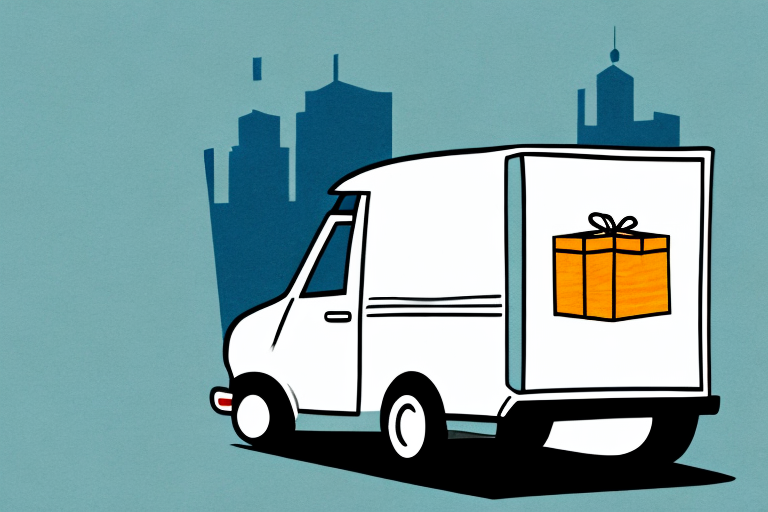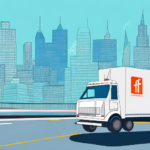The Benefits of Last Mile Home Delivery in E-Commerce
The e-commerce industry has experienced exponential growth in recent years, elevating the significance of last mile home delivery. This final phase of the supply chain process involves transporting packages from warehouses or distribution centers directly to customers’ doorsteps. This article delves into the myriad benefits of last mile home delivery and its transformative impact on the e-commerce landscape.
Revolutionizing E-Commerce through Last Mile Delivery
Enhanced Delivery Speed and Efficiency
Last mile home delivery has significantly reduced the time it takes for consumers to receive their orders. While traditional delivery methods often required several days or weeks, advancements in last mile logistics now enable same-day or even within-hours deliveries, enhancing customer satisfaction and loyalty.
Boosting Online Shopping Growth
The assurance of prompt delivery encourages more consumers to shop online, directly increasing revenue for e-commerce businesses. According to a Statista report, global e-commerce sales are projected to reach $6.54 trillion by 2023, underscoring the critical role of efficient delivery systems.
Innovation in Logistics Technology
The demand for faster and more reliable last mile delivery has spurred innovation in logistics technology. Companies are investing in drones, autonomous vehicles, and advanced route optimization software to enhance delivery speed and reduce operational costs.
Job Creation and Economic Growth
The expansion of last mile delivery services has led to the creation of numerous jobs, including delivery drivers, logistics managers, and technology specialists. This surge in employment contributes positively to the economy and supports local communities.
Growth and Impact of Last Mile Delivery
Market Expansion and Projections
The last mile delivery market is booming, with projections by Grand View Research estimating the global market to reach $82.4 billion by 2025, growing at a CAGR of 15.3% from 2020 to 2025.
Environmental Considerations
The shift towards electric and hybrid delivery vehicles is helping reduce carbon emissions. Additionally, optimized delivery routes contribute to lower fuel consumption and decreased traffic congestion, promoting sustainability in the logistics sector.
Challenges in Last Mile Delivery
Despite its advantages, last mile delivery faces challenges such as high implementation costs, traffic congestion, and noise pollution in residential areas. Addressing these issues is essential for the sustainable growth of the industry.
Enhancing Customer Satisfaction through Last Mile Delivery
Meeting Consumer Expectations
Customers today expect fast, reliable, and flexible delivery options. Failing to meet these expectations can result in negative reviews and loss of business. Last mile delivery services offer various options like same-day, express, and scheduled deliveries to cater to diverse customer needs.
Competitive Advantage
Offering superior last mile delivery services provides businesses with a competitive edge. Companies that prioritize efficient delivery can attract and retain customers more effectively in a crowded marketplace.
Technological Innovations in Last Mile Delivery
Real-Time Tracking and Communication
Advanced tracking systems allow both businesses and customers to monitor packages in real-time, enhancing transparency and trust. Mobile applications facilitate seamless communication between delivery personnel and customers, improving the overall delivery experience.
Autonomous and Drone Deliveries
Autonomous vehicles and drones are being tested and implemented to further expedite the last mile delivery process. These technologies promise to reduce delivery times and operational costs while increasing efficiency.
Sustainable Delivery Practices
Technology enables the implementation of sustainable practices, such as route optimization to minimize fuel usage and the adoption of eco-friendly packaging materials. These initiatives help reduce the environmental footprint of last mile deliveries.
Supporting Small Businesses and Entrepreneurs
Access to Efficient Delivery Services
Last mile delivery services empower small businesses and entrepreneurs by providing access to efficient and scalable delivery options without the need for significant investment in logistics infrastructure. Partnering with third-party logistics providers (3PLs) enables smaller enterprises to compete with larger companies effectively.
Promoting Market Diversity
The availability of reliable delivery services supports a diverse range of businesses, fostering a more competitive and varied marketplace. This diversity benefits consumers through better prices and a wider selection of products.
Adaptation During Crises
During events like the COVID-19 pandemic, last mile delivery became even more crucial as consumers increasingly relied on online shopping. Small businesses utilizing these services were better positioned to adapt and continue serving customers during challenging times.
The Future of Last Mile Home Delivery
Sustainability and Green Deliveries
There is a growing emphasis on sustainable delivery practices, including the use of electric vehicles, bike couriers, and consolidated delivery routes to reduce environmental impact. Consumer demand for eco-friendly options is driving this trend.
Integration of Artificial Intelligence
Artificial intelligence and machine learning are set to play pivotal roles in optimizing delivery routes, predicting delivery times, and enhancing overall operational efficiency. These technologies will help reduce costs and improve service quality.
Personalized Delivery Experiences
Consumers are seeking more personalized delivery options, such as in-home deliveries and real-time updates. Businesses are investing in technologies and services that offer tailored delivery experiences to meet these evolving preferences.
Autonomous Delivery Solutions
The development and deployment of autonomous delivery vehicles are expected to increase, offering faster and more cost-effective delivery solutions. Companies like Amazon and FedEx are at the forefront of testing these innovative technologies.
Choosing the Right Last Mile Delivery Provider
Key Considerations
- Experience and Reputation: Evaluate the provider’s track record and customer reviews.
- Delivery Options: Ensure the provider offers the delivery speeds and flexibility your business requires.
- Technology Capabilities: Look for providers that utilize advanced tracking and routing technologies.
- Scalability: Choose a provider that can grow with your business and handle increased delivery volumes.
Importance of Customer Service
A provider with excellent customer service can enhance the overall delivery experience, ensuring timely deliveries and efficient issue resolution. Effective communication tools, such as real-time tracking and responsive support teams, are critical factors to consider.
Sustainable Practices in Last Mile Delivery
Reducing Carbon Footprint
Implementing sustainable delivery methods, such as using electric vehicles and optimizing delivery routes, helps reduce the environmental impact of last mile deliveries. Businesses can also adopt eco-friendly packaging materials to further minimize their carbon footprint.
Encouraging Sustainable Choices
Offering customers the option to choose slower delivery methods or consolidate deliveries can decrease the number of trips required, thereby lowering emissions. Providing pickup locations, such as local stores or lockers, also offers a more sustainable alternative to individual home deliveries.
Overcoming Challenges in Last Mile Delivery
Addressing Traffic and Weather Issues
Utilizing advanced routing software and real-time traffic data can help mitigate delays caused by traffic congestion and adverse weather conditions. Proactive communication with customers regarding potential delays can also improve satisfaction.
Preventing Package Theft
Implementing secure delivery options, such as requiring signatures upon delivery or using lockboxes, can reduce the incidence of package theft. Additionally, providing customers with real-time tracking allows them to monitor their deliveries and retrieve packages promptly.
Optimizing Business Operations with Efficient Delivery Strategies
Customizing Delivery Options
Offering a variety of delivery options, including same-day, express, and scheduled deliveries, allows businesses to meet diverse customer needs and preferences.
Flexible Delivery Windows
Providing flexible delivery windows enhances convenience for customers and increases the likelihood of successful deliveries.
Incentivizing Sustainable Options
Encouraging customers to choose eco-friendly delivery methods through incentives, such as discounts or loyalty points, can promote sustainable practices and reduce operational costs.
Understanding the Economics of Last Mile Delivery
Cost Factors
The cost of last mile delivery is influenced by factors such as delivery distance, speed, package size, and the number of packages. Efficient route planning and consolidation of deliveries can help manage and reduce these costs.
Improving Profitability and ROI
Optimizing delivery processes and leveraging technology can enhance profitability by reducing operational expenses. Conducting thorough cost-benefit analyses enables businesses to identify the most cost-effective delivery strategies and maximize return on investment.
Conclusion
Last mile home delivery is an indispensable component of the e-commerce ecosystem, offering significant benefits for businesses, customers, and the broader economy. By embracing technological innovations, sustainable practices, and efficient delivery strategies, the future of last mile delivery promises continued growth and enhanced customer satisfaction.




















